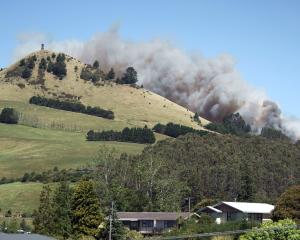
Niwa climate scientist Gregor Macara said the month was characterised by higher-than-normal mean sea level pressure over and west of New Zealand, which was associated with more settled southwesterly airflows than normal.
Temperatures were above average, or well above average, for most of the South Island.
On March 2-3, warm northwesterly winds over the South Island contributed to 12 New Zealand locations observing record or near-record high daily maximum temperatures for March — most notably Clyde, which reached 33.1°C on March 2.
It was the town’s highest March temperature since records began in 1978.
On March 16-17, another warm northwesterly airflow delivered very warm air from interior parts of Australia, and eight New Zealand locations observed record or near-record high daily maximum temperatures for March.
Mr Macara said "exceptionally high" temperatures were recorded overnight in many inland and eastern parts of the South Island, including Middlemarch (29.0°C), Clyde (24.2°C), Lauder (23.5°C), Invercargill (22.3°C) and Ranfurly (22.2°C).
However, temperatures were "typically near average" around Dunedin, where the mean temperature was 14.4°C.
Oban (Stewart Island) had a mean maximum air temperature of 18.1°C for March — its third highest on record.
He said the country’s highest temperature was 33.6°C, observed at Timaru, on March 17, and the lowest temperature was -2.5°C, at Cass (inland Canterbury) on March 6.
The nationwide average temperature in March 2025 was 16.3°C, which was 0.5°C above the 1991-2020 March average from Niwa’s seven station temperature series.
While March rainfall totals were below normal or well below normal for much of the western and inland parts of the South Island, they were above normal or well above normal across eastern parts, from Cape Campbell to Dunedin.
It meant conditions were very dry in the Queenstown-Lakes district, but places like Oamaru recorded more than 200% of its normal March rainfall, he said.
The highest one-day rainfall was 186mm, recorded at Milford Sound, on March 17.
At the end of March, soil moisture levels were near normal for the Otago and Southland regions.
Mr Macara said the highest wind gust of the month was 154kmh at Puysegur Point, on March 17. On the same day, strong northwesterly winds resulted in several flight delays and cancellations at Dunedin airport.
Oamaru recorded its highest March extreme wind gust on March 4, when wind speeds reached 109kmh — its highest since 1984.











